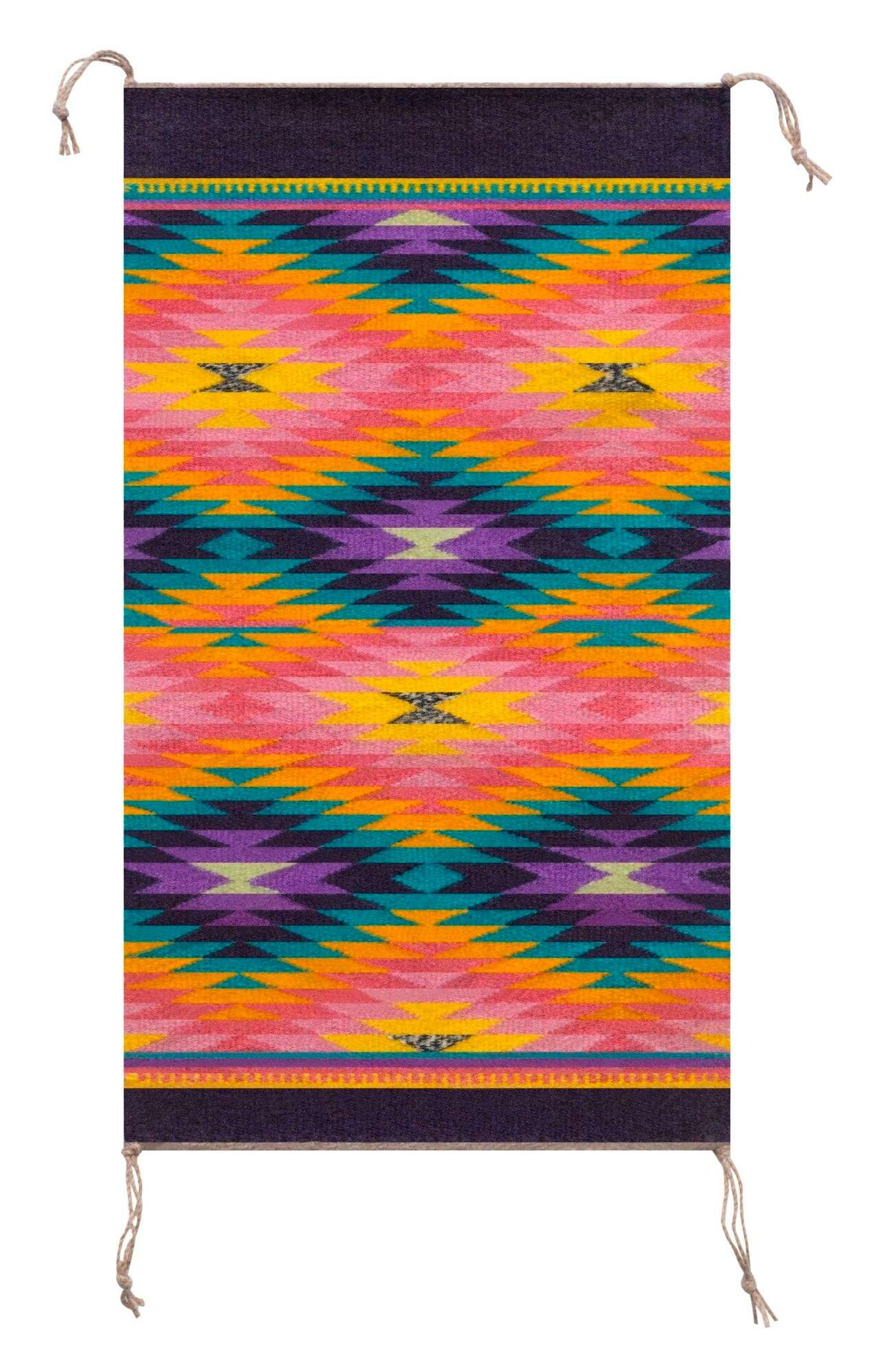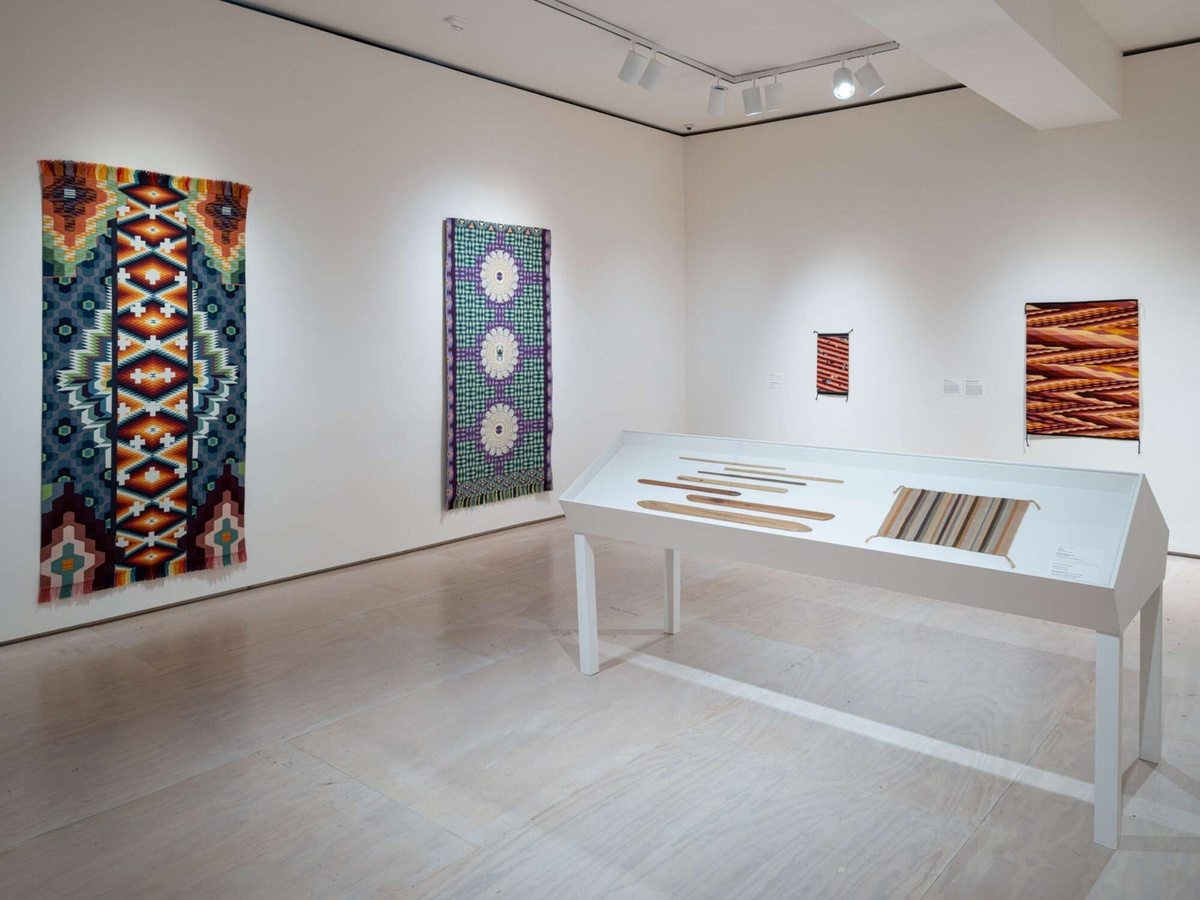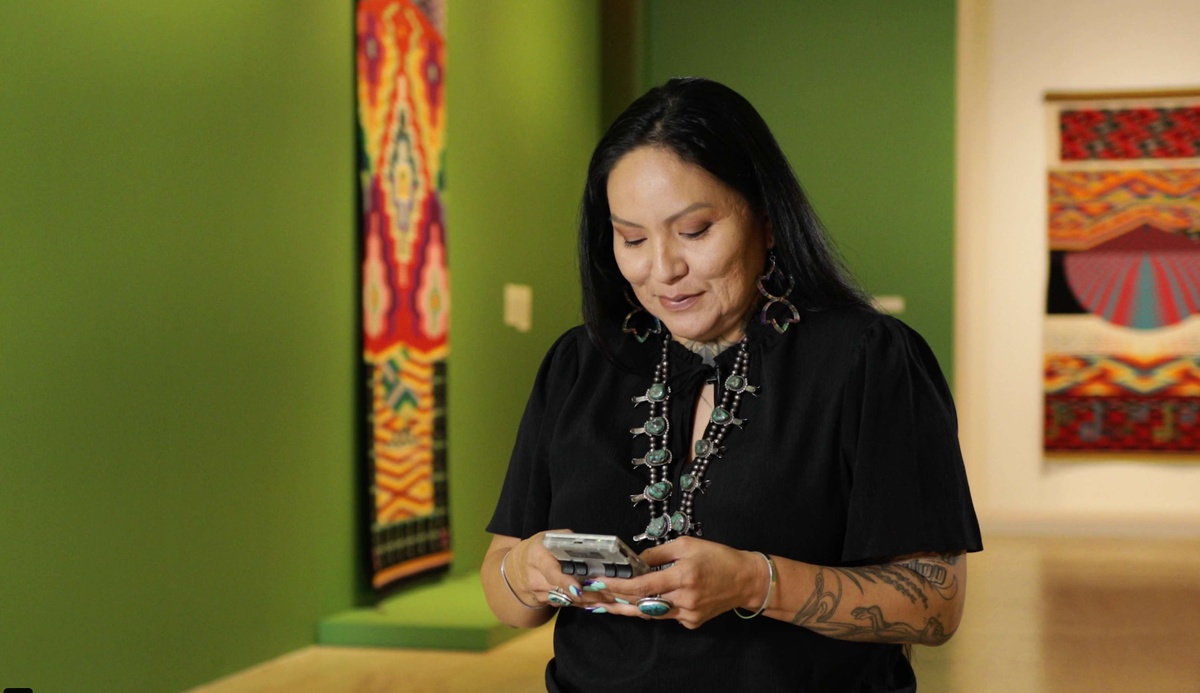Melissa Cody
4 de abr – 9 de sep, 2024
- Pasado
- Exposición
Imagen: Melissa Cody. Untitled. 2022. Wool warp, weft, selvedge cords, and aniline dyes. 106 x 56 in. (269.2 x 142.2 cm). Courtesy the artist and Garth Greenan Gallery, New York. Video: Filmado por Elle Rinaldi; Imágenes adicionales cortesía de Hammer Museum; Edición de vídeo por Elle Rinaldi; Grabación de audio por Nora Rodriguez; Diseño Gráfico por Julia Schäfer
MoMA PS1 presentará la primera exposición individual de Melissa Cody (n. 1983, No Water Mesa, Arizona), tejedora navajo de cuarta generación. Melissa Cody: Webbed Skies [Cielos palmeados] abarca la última década de su práctica artística, presentando más de 30 tejidos y una nueva comisión importante. Cody utiliza métodos tradicionales, patrones complejos y tintes hechos a mano para resaltar los tapices como tecnologías potentes para la narración visual, sugiriendo su influencia en la automatización digital actual. Los tapices de Cody siguen los métodos del tejido tradicional navajo que se desarrolló a partir de la lana y las mantas que se fabricaban en Germantown, Pensilvania, y que el gobierno de Estados Unidos suministró al pueblo navajo durante la expulsión forzada de sus territorios a mediados del siglo XIX. Si bien Cody reconoce esta historia y trabaja en un telar tradicional navajo, sus obras magistrales ejercitan paletas y patrones experimentales que anima a través de la reinvención, reformulando las tradiciones como ciclos evolutivos.
Melissa Cody es una artista textil navajo/diné y miembro inscrita de la nación navajo. Cody creció en una reserva en Leupp, Arizona, y recibió una licenciatura en arte y estudios de museos por el Institute of American Indian Arts, Santa Fe. Su obra se ha exhibido en The Barnes Foundation, Filadelfia (2022); Crystal Bridges Museum of American Art, Bentonville, AR (2021); National Gallery of Canada, Ottawa (2019-2020); Museum of Northern Arizona, Flagstaff (2019); SITE Santa Fe (2018-19); Ingham Chapman Gallery, University of New Mexico, Albuquerque (2018); Navajo Nation Museum, Window Rock (2018); y Museum of Contemporary Native Arts, Institute of American Indian Arts, Santa Fe (2017–18). Las obras de Cody se encuentran en las colecciones del Stark Museum of Art, Orange, Texas; the Minneapolis Institute of Arts; and The Autry National Center, Los Ángeles. En 2020, obtuvo el Premio Brandford/Elliott a la Excelencia en Arte con Fibras.

![World Traveler [hi-res].jpg](https://d1tcycker2ppj.cloudfront.net/output=f:jpg,q:60/resize=width:1200,fit:max/pZZnh2STwK1dbgNCVGvu)
![Into the Depths, She Rappels [hi-res].jpg](https://d1tcycker2ppj.cloudfront.net/output=f:jpg,q:60/resize=width:1200,fit:max/g0IUJnGTh6VfSlOHg6k7)











